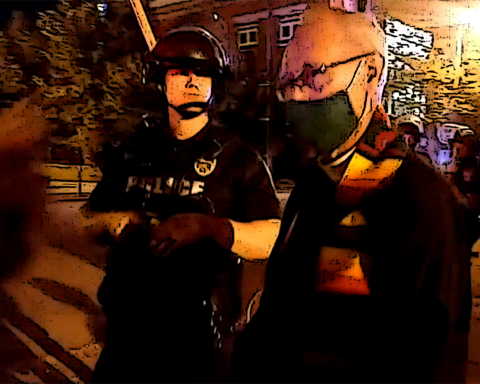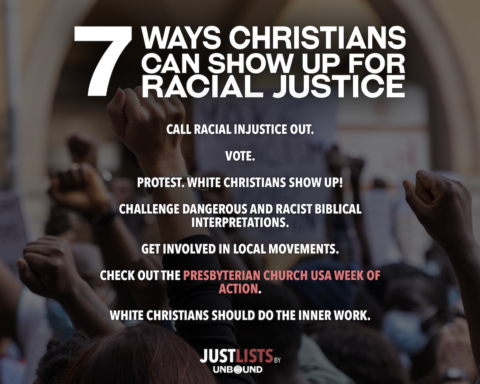
“I am bringing you good news of great joy for all the people:
to you is born this day in the city… a Savior,
who is the Messiah, the Lord.”
-Luke 2:10b-11, NRSV (emphasis added)
The “city” has been an important image in Christian theological and popular imagination since its inception. Holy Scriptures point to the creation of the world centered in an idyllic garden, yet redemption on the cross and the restoration of the created order is narrated to happen in a city.
American Christianity developed mainly out of cities. Christian ministry and life in the United States, and indeed around the world, has a significant urban focus. Certainly, not all Christians live and worship in cities, yet there is a particularity to the challenges and opportunities of the urban contexts that seems to call on the imagination, passion, and commitment of Christians in very creative and sometimes consuming ways.
___________________________________________
Holy Scriptures point to the creation of the world centered in an idyllic garden, yet redemption on the cross and the restoration of the created order is narrated to happen in a city.
___________________________________________
One of the challenges I see in urban ministry is the kind of spaces of vocational discernment and opportunities for training that this kind of contextual ministry requires. Urban ministry is not simply about understanding systems or having an awareness of intercultural realities. Urban ministry certainly requires this, but it also requires an active presence struggling for justice, preaching equality, and living the hope of love. In this article I seek to explore Christian imagination of the city and its current challenges and opportunities for the Church.
 For some time now, leaders of the five Presbyterian congregations in the Plainfields [1] of New Jersey have been gathering intentionally to share about the challenges our urban context in the post-industrial era of the early twentieth century poses to the Christian witness and ministry in this setting. It has been interesting to experience the different (and sometimes differing) understandings of what a city is, of the historical and contemporary issues in the Plainfields, and of what the mission of a congregation to a city should be. There appear to be three distinct interpretative lenses through which the participants in these gatherings are reading the challenges to ministry in the Plainfields: generational, ethnic, and historical. Although not the only hermeneutical categories named in the ongoing conversations, these three lenses speak best to the hopes and challenges these leaders perceive in their (personal and collective) understanding of the Plainfields, of urban life, and of the “parish” as a model of ministry and mission.
For some time now, leaders of the five Presbyterian congregations in the Plainfields [1] of New Jersey have been gathering intentionally to share about the challenges our urban context in the post-industrial era of the early twentieth century poses to the Christian witness and ministry in this setting. It has been interesting to experience the different (and sometimes differing) understandings of what a city is, of the historical and contemporary issues in the Plainfields, and of what the mission of a congregation to a city should be. There appear to be three distinct interpretative lenses through which the participants in these gatherings are reading the challenges to ministry in the Plainfields: generational, ethnic, and historical. Although not the only hermeneutical categories named in the ongoing conversations, these three lenses speak best to the hopes and challenges these leaders perceive in their (personal and collective) understanding of the Plainfields, of urban life, and of the “parish” as a model of ministry and mission.
The historical perspective that often comes up in our conversations points us to beginnings of the Presbyterian presence in the Plainfields, which dates back to the first quarter of the nineteenth century. Back then, the Plainfields were sleeping communities for New York City. The Plainfields rapidly developed an industrial economy that accounts for the steady and continuous growth of population and wealth through the first half of the twentieth century. This growth in population and wealth, in turn, led to a rapid increase of Presbyterian congregations and membership in these congregations. This period is still referenced in some conversations about the life and mission of these congregations.
___________________________________________
I share with you this “story in the making” from the Plainfields as a way to narrate the complexity (and outright difficulty) of ministry in urban contexts.
___________________________________________
Another formative period often referenced is the rioting of the late 1960s. A situation with obvious racial undertones, the riots are commonly blamed, even today, for the area’s decline in prosperity. And although red-taping was fairly common practice prior to the riots, from the 1970s onward, there has been a clear ethnic and racial demarcation throughout the Plainfields. While unearthing the real reasons for the decline in industry and wealth – and of the not-so-covert racial lines between neighborhoods in the region – is not the purpose of this article, it bears mentioning that today, nearly 50 years after the riots, historical and ethnic appreciations of this history continue to inform how some perceive the realities of the “city across the line.”

Photo Credit: www.pogues.com
The experience of race and ethnicity are also a lens through which many of these leaders see the challenges and opportunities of ministry in the Plainfields. The ethnic stories of this area are far more rich and complex than the white and black tensions of the riots in the 1960s might seem to suggest. The 2010 US Census reveals that 50% of the population in Plainfield is Black, while 40% is Latino. In North Plainfield, 44% of population is Latino, while 19% is Black. In South Plainfield, 13% of the population is Latino and 10% Black. I share these numbers to show that there is much more ethnic diversity to this area than a black and white history can convey.
What’s more, the history of the riots, such an important historical reference point in racial/ethnic relations for some, is mostly unknown to new immigrant groups who have become an important social and economic presence in recent years. The presence of new immigrant groups, particularly in the last 20 years, has brought new challenges to racial/ethnic relations in the Plainfields, particularly around the issue of immigration and jobs. Of the five Presbyterian congregations I mentioned earlier, one is a Latino/a multicultural congregation, one is a Black congregation, and the other three self-identify as either multicultural or diverse.
___________________________________________
Appropriate and effective Christian ministry requires presence – the incarnation of Jesus Christ in the hopes, challenges, and opportunities of the places we are called to serve.
___________________________________________
Generational perceptions of history and context are another important perspective in our meetings. The effect of generational diversity is particularly evident in these conversations as members of our group offer distinct emphases and interpretations of important historical moments in our congregations and the city as a whole. It is interesting to note how these emphases inform (or don’t inform) our dreams and hopes for a renewed Presbyterian presence in the area. For the younger leaders of these congregations, particularly those who live, study, and/or work in the Plainfields, diversity – racial and ethnic, political and theological, social and economic – has been a fundamental part of their social engagement in the area. Many of these younger leaders have been keen to point out how these diversities are not reflected in Sunday worship or in the ministry of the congregations.

I share with you this “story in the making” from the Plainfields as a way to narrate the complexity (and outright difficulty) of ministry in urban contexts. Not only does every interested party has its own understanding of what the city is and what kind of Christian presence is required, but it sometimes feels that many congregational leaders in cities (or interested in doing urban mission) think that being aware of demographic data, socioeconomic situations, and development potential is enough to develop a “strategy” for the city. The Plainfields, like other urban centers throughout the US (and the world), are in dire need of well-intended plans and actions for social, economic, and political development. However, none of these efforts from Christian congregations and not-for-profit groups will make sense or ultimately succeed without two essential elements: Presence and Witness.
Regarding the Church’s work in and with the world, Pope Francis has repeatedly said that, “the Church’s missionary spirit is not about proselytizing, but the testimony of a life that illuminates the path, which brings hope and love. The Church…is not a relief organization, an enterprise, or an NGO, but a community of people, animated by the Holy Spirit, who have lived and are living the wonder of the encounter with Jesus Christ and want to share this experience of deep joy, the message of salvation that the Lord gave us. It is the Holy Spirit who guides the Church in this path.” [2]
___________________________________________
The Church should not be an organization where people come to be served, nor one whose primary objective is to bring people into its fold.
___________________________________________
Appropriate and effective Christian ministry requires presence – the incarnation of Jesus Christ in the hopes, challenges, and opportunities of the places we are called to serve. Cities are especially in need of a Church that is present. Wherever people come from to worship, congregations whose sanctuaries are located in cities are often challenged by a membership that does not reflect the composition of the cities where they are located and which they are called (primarily) to serve. The Church should not be an organization where people come to be served, nor one whose primary objective is to bring people into its fold. The Church is not in any way, shape, or form a building. The Church is a gathering of believers in Jesus Christ, called by God to gather, to worship, to discipleship, and to witness.

Photo Credit: Erin Raffety
This very public, very intentional presence is also called to be a witness. The Church must never be a private gathering. It is (and must be) a public testimony of the God that calls, gathers, sends, and saves. Ronald Peters says that, “congregations with effective urban ministries typically structure the teaching of the faith within the parish to enable believers to live empowering lives in the urban context in a way that inevitably enhances the quality of city life in the public sector… one has to take seriously the public realities of city life. Urban ministry, therefore, evidences a strong orientation in the values and interests that inform effective public ministry.” [3] Urban contexts yearn for such a public and intentional presence speaking hope into economic despair, reconciliation into wounded relationships, healing into illness and pain, restoration into political disenfranchisement, love into violence and hatred, peace into social hopelessness, salvation into the City. Urbanites of all walks of life and origins are ready to hear good news for all people – salvation can be born in the city for the city.
However, this message cannot come from outside the urban setting. For this witness to be relevant to the diverse contexts in urban areas, it requires that congregations not just talk about cities, but rather work with those who work and live in the city. Presence and witness in urban settings must be of the city, by the city, and for the city. Christian theology, history, praxis, and Scriptures have never advocated for “physical withdrawal from the urban space. What does become apparent, however, is that the record of faith does show how people of God have responded to the urban environment and its wider socioeconomic context and how that encounter has been a contributing factor in the experience and understanding of community and faith.” [4]
___________________________________________
Presence and witness in urban settings must be of the city, by the city, and for the city.
___________________________________________
The question remains: how does one faithfully go about ministry and mission with the city? My response usually is that I’m still working on that. There is no one answer to the challenge of urban ministry, and I am not one to advocate for generic models being applied to congregational ministry. Context is, surely, everything. And we have to keep on working on it. In 2011, 51% of the world’s population, and 82% of the population in North America lived in urban areas; it is expected that by 2050, 68% of the world’s population will live in cities and metropolitan areas. [5]

I am still working on it by joining friends and colleagues in an intentional sharing and learning time at Princeton Seminary’s first Urban Ministry Conference in May 2014. I am working on it by continuing my conversation with my Plainfields colleagues. I am working on it by engaging with the members and friends of Nuevas Fronteras Presbyterian Church and participating in their fears, challenges, hopes, and dreams of a congregation that is not only in the City, but one that is for the City. I invite you, also, to engage these fears, challenges, hopes, and dreams by being for the City. And bring with you that good news of great joy (even during this season of Lent!) for all people: salvation is born in the city for the city, even today.
*****
AUTHOR BIO: Amaury Tañón-Santos serves as Parish Associate of Nuevas Fronteras Presbyterian Church (Plainfield, NJ – Elizabeth Presbytery) and as Director of Programs at Princeton Seminary’s Continuing Education. He also serves in the Transitions Working Group and the Emerging Leaders Taskforce of the Synod of the Northeast. He studied history at the Universidad de Puerto Rico, trained for pastoral ministry at Princeton Seminary (MDiv), and pursued doctoral studies in Urban Ministry at New Brunswick Theological Seminary (DMin).
To read other articles from Week 2: The Sin of your Sister Sodom, click here.
Read more articles in this series.
____________________________________
[1] Located in Central Jersey, Plainfield (Union County), North Plainfield (Somerset County), and South Plainfield (Middlesex County) comprise an area known as The Plainfields. This area is within the bounds of the Presbytery of Elizabeth, with five congregations in Plainfield and North Plainfield.
[2] “Message of Pope Francis For World Mission Day 2013” (Messages for World Mission Days, 2013). http://www.vatican.va/holy_father/francesco/messages/missions/documents/papa-francesco_20130519_giornata-missionaria2013_en.html (19 May 2013).
[3] Ronald E. Peters, Urban Ministry: An Introduction, (Nasville, TN: Abingdon Press, 2007), 156.
[4] Andrew Davey, Urban Christianity and Global Order: Theological Resources for an urban Future, (Peabody, MA: Hendrickson Publishers, 2002), 84.
[5] World Urbanization Prospect: The 2011 Revision, (New York: United Nations, 2012)





Unbound Social